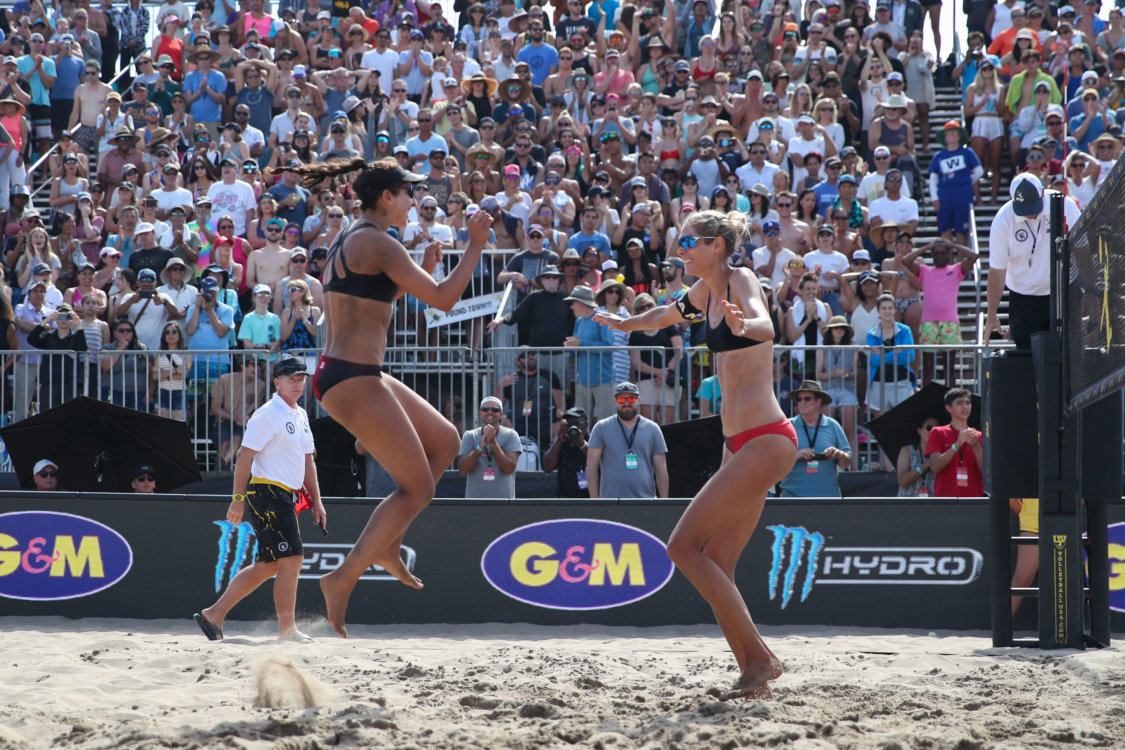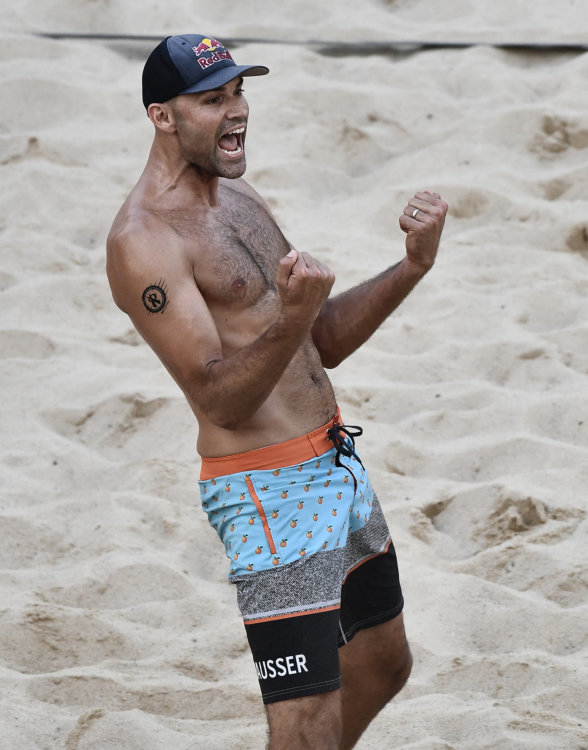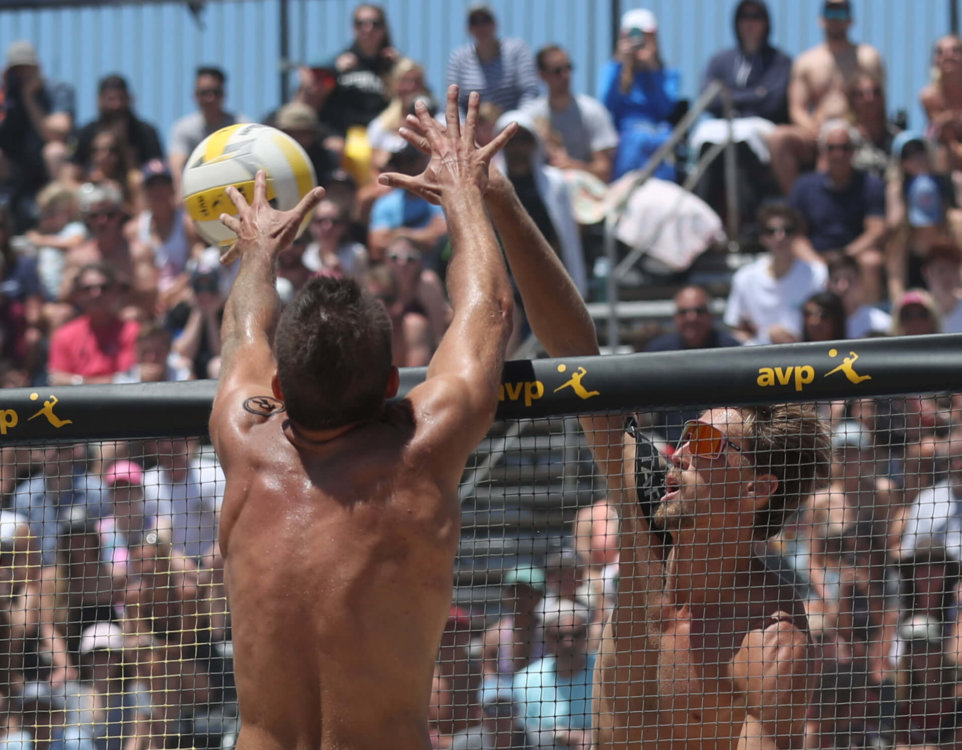Last week, we tackled the five methods of the Olympic Qualification process. I highly recommend checking out this article before continuing. Go ahead, I’ll wait.
Okay—now that we’re all up-to-date…
As promised, in this second Olympic piece, I’ll give you an update on the Race to Tokyo. While there are tight races in multiple countries, as AVP fans, we’ll focus on the Americans and Canadians we have on tour, with a few honorable mentions from other nations.
Method 4—qualification via the Olympic Ranking (OR)—will make up the bulk of this piece. But first, let’s do a quick recap of who’s already qualified for Tokyo 2020.
Method 1: Host Country (1 spot)
Women: Megumi Murakami and Miki Ishii (#28 in Women’s OR)
Men: Takumi Takahashi and Yoshiumi Hasegawa (#78 in Men’s OR)
Though these two teams aren’t solidified as the two teams that Japan will pick, here are their current highest-ranked teams.
Method 2: 2019 World Championships (1 spot)

Women: Canadians Sarah Pavan and Melissa Humana-Paredes (#3 )
Men: Russians Oleg Stoyanovskiy and Viacheslav Krasilnikov (#2)
AVP Note: Sarah and Mel, the defending FIVB Team of the Year, made a major splash on the AVP in 2019, as well. They made three finals and won two, most notably becoming the first Canadians to win the Manhattan Beach Open.
Method 3: FIVB Beach Volleyball Olympic Qualification Tournament (2 spots)
Women: Spaniards Elsa Baquerizo and Liliana Fernandez (#14)
Women: Latvians Anastasija Kravcenoka and Tina Graudina (#19)
Men: Italians Daniele Lupo and Paolo Nicolai (#20)
Men: Latvians Martin Plavins and Edgars Tocs (#15)
AVP Note: Elsa played in an AVP qualifier in 2017 with Brazil’s Maria Clara Salgado (now an AVP regular). They lost in their second round to Sarah Pavan and Lane Carico. It may be the gnarliest qualifier matchup I’ve ever seen; two Olympians on one court in an early-round qualifier match. So glad I wasn’t in that bracket.
Too Awesome Not to Mention Note: Tina Graudina is a 21-year-old Junior at USC. It’s okay, I feel unaccomplished, too.
Rio 2016 Note: Though they may not be considered a podium contender now, don’t write off veterans Lupo and Nicolai in Tokyo. They came in as the #10 seed in Rio and went home with the Silver Medal.
Method 4: Olympic Ranking (15 spots)
Okay, now to the really exciting stuff.
This is the Race. From the first tournament of the Qualification period in late September 2018, Olympic contenders have had their sights set on Tokyo. And the drama only heats up from here. So, which Americans have a chance? Let’s start with the ladies.
Since the USA has four women’s teams in the top 10, it’s basically a lock that the Americans will earn both allotted quota spots. Here’s how they stack up against each other:
First Place: April Ross and Alix Klineman (#2 with 8,760 points)
Second Place: Kerri Walsh Jennings and Brooke Sweat (#5 with 6,960 points)
Third Place: Sarah Sponcil and Kelly Claes (#8 with 6,640)
Fourth Place: Emily Stockman and Kelley Larsen (#10 with 6,080 points)
Fifth Place: Sara Hughes and Summer Ross (#31 with 4,380 points)
Sixth Place: Betsi Flint and Emily Day (#38 with 3,440 points)
April and Alix have all but clinched the first US spot with their stellar finishes. Since the qualification period began on September 1, 2018, they’ve made seven finals and won five times. Their second-place finish at the World Champs in Hamburg earned them 1440 points, 240 more than winning a 5-Star. Being so far in the lead with only one 5-Star before the June 14 cutoff, they’re virtually impossible to reach.
So, we look to the all-important second place spot. Remember, the OR counts your 12 best finishes. Teams can replace lower finishes with higher ones to climb the OR. With only 320 points separating the veterans Kerri and Brooke and youngsters Sarah and Kelly (not to be confused with Sara or Kelley), that spot could change hands as early as April (the month, not Ross). Kerri and Brooke have four finishes with less than 500 points. Sarah and Kelly have seven such finishes. Here’s what it takes in each tourney to replace a sub-500-point finish and really boost your OR:
3-Star: 2nd – 1st place (540 – 600 points)
4-Star: 4th – 1st place (560 – 800 points)
5-Star: 9th – 1st place (600 – 1200 points)
Before the June 14 cutoff, there are three 3-Stars, eight 4-Stars, and one 5-Star (see calendar for dates and locations). So that’s twelve chances for these teams to better their OR and clinch the final berth to the big stage.
Kelley and Emily could also wreak some havoc on the Race and definitely aren’t out of the running. Eight of their twelve finishes are 500 points or less. If they podium a few times, they’ll wipe out those lesser finishes and could rocket to second place.
Sara and Summer, though in fourth place, have sadly suspended their Olympic run. Summer suffered an injury last season that she’s still recovering from (but she’s working hard to get healthy for the first AVP in May—yay!). Sara is now making a run for Tokyo with Lauren Fendrick.
Sara and Lauren currently have no OR as they haven’t played in an FIVB together since early 2017. With only twelve 3-Stars or higher—tourneys that offer enough points to end up in second place—before the cutoff, they’ll basically have to play in every one to have a chance. They’re going to have a wild spring and early summer of travel and competition, but with Lauren’s Olympic experience and Sara’s insane athleticism, we could have some fun matches in store.
Betsi and Emily aren’t out of it either. Since they’ve only played eight tournaments, their next four will only add to their OR. The 2019 Hermosa Champs have a lot of work to do, but with so many points to be gained, they can climb to the top and join the fight for that coveted second place spot.
AVP Note: Four of the top ten teams are American; three of those teams made a 2019 AVP Final. That’s so freaking cool. Also in the top ten are a few Canadians you know—2019 MBO and Waikiki Champs Sarah and Mel, and 2-time AVP Finalist Brandi Wilkerson. Way to go, ladies.
Now for the gentlemen.
First Place: Taylor Crabb and Jake Gibb (#8 with 6,500 points)
Second Place: Trevor Crabb and Tri Bourne (#11 with 6,280 points)
Third Place: Phil Dalhausser and Nick Lucena (#21 with 5,360 points)
Fourth Place: Billy Allen and Stafford Slick (#36 with 3,880 points)
The drama on the men’s side is real, and I am here for it.

At first glance, it looks like a clear cut top two. Tri and Trevor had been in first since the beginning—they actually won the very first tournament inside the Qualification window. But, in brotherly fashion, Taylor took the lead from Trevor when he and Jake won Chetumal this past November. Chetumal was Taylor and Jake’s 12th tournament, so they added all 800 points to their OR. Both teams now have at least 12 tournaments—Jake and Taylor have five sub-500-point finishes while Tri and Trevor have seven.
That two-team race becomes a three-team race when you factor in that Gold Medalist Phil and longtime friend Nick have played in only ten tournaments. Their OR could increase drastically in just their first two tournaments. There are two big men-only tournaments in early March: a 3-Star in Iran and a 4-Star in Qatar. So it’s feasible that Phil and Nick could be in the lead before St. Patrick’s Day! The standings could change after every tournament!! We get to witness an ongoing, epic battle until June 14th for both quota spots!!!
Sorry, I’m just excited.
But don’t count out Billy and Stafford—they have the potential to play spoiler. The duo only has 11 finishes and, frankly, a huge feat in front of them. But if they play as well as we’ve seen them on AVP’s Stadium Court, they have a fighting chance.
Alright, one more thing. We can’t ignore the Crabb brothers’ rivalry because this may be the best one yet. I’ve relished their competition (on the court and on Instagram) since their partnership broke up in 2016. Taylor has significantly more AVP titles (8 to 1), but Trevor’s only victory will get his name on the Pier (Taylor’s isn’t there). Trevor was leading the OR until the last tournament of 2019 when Taylor claimed it. They also live in the same house; I wonder what the vibe is like before they play each other. Or after. Eek. Whatever the minutiae behind their rivalry may be, all I care about are the intense stare downs and petty Instagram wars.

Method 5: Continental Cups (5 spots)
As the last chance to qualify, these tournaments are held between June 22-28, a week after the OR cutoff. American men and women should clinch both quota spots via Method 4, so AVP teams likely won’t play in the NORCECA Continental Cup.
—————
There you have it! These athletes (and our brains) have the next two months to relax before it gets crazy. That is if you consider practicing, analyzing film, working out, strategizing, and rehabbing to be “relaxing.”
Talk soon,
Kim